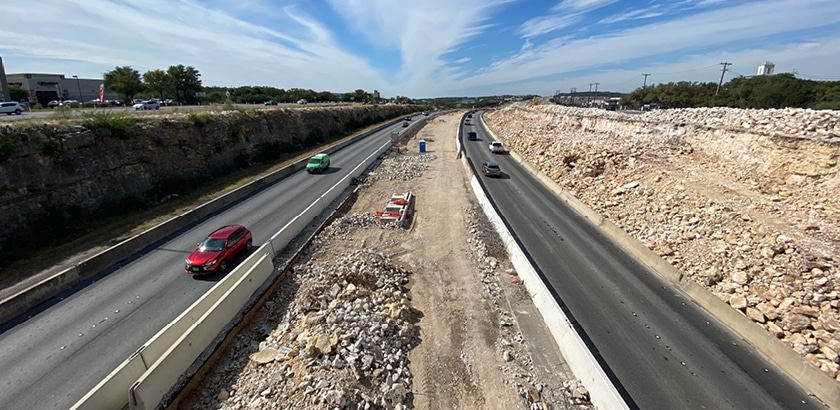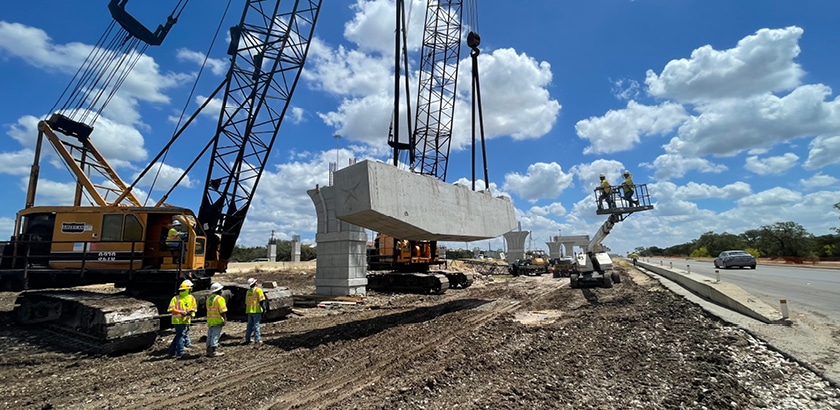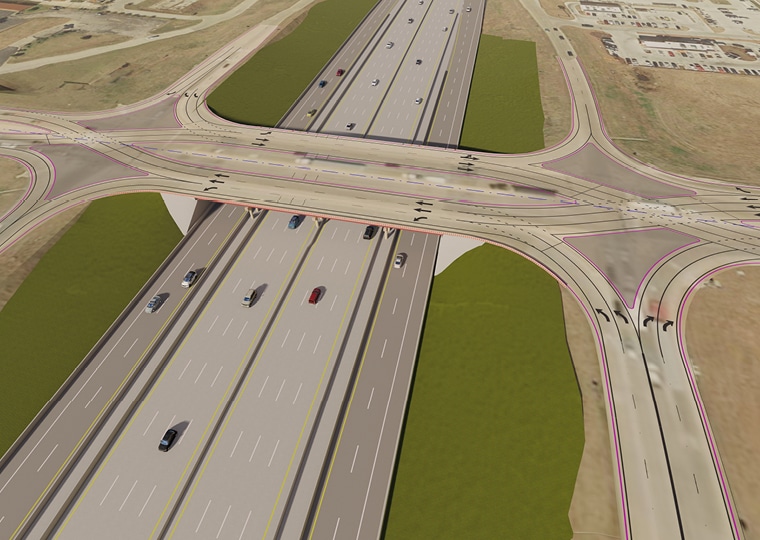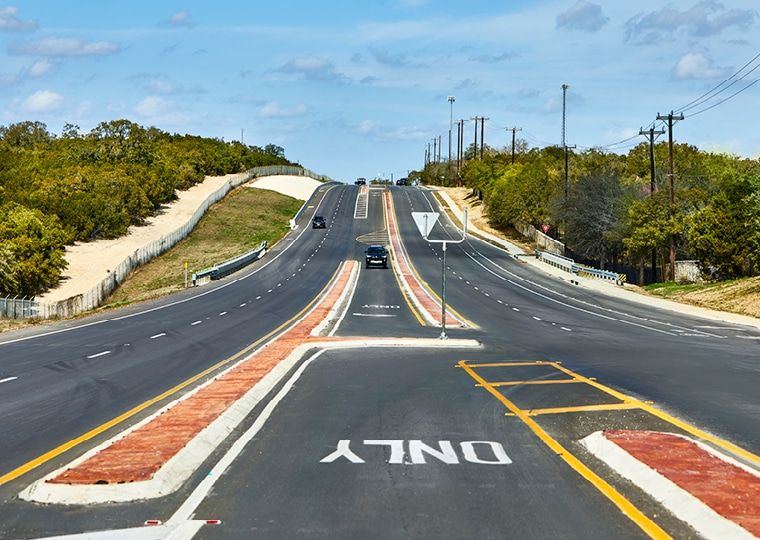
Our Construction Engineering and Inspection (CE&I) team in Texas is leveraging its construction expertise along with utilizing innovative 4D software to help facilitate the reconstruction of one of the most congested corridors in the state.
On behalf of the Texas Department of Transportation (TxDOT), CP&Y, an STV Company, is serving as the Prime consultant performing CE&I services on an 18-mile section of the $1.3 billion Loop 1604 expansion project. This program will make significant transportation improvements designed to advance mobility, alleviate congestion and improve safety along the highly traveled roadway, which connects commuters to radial highways that carry them into San Antonio and the surrounding area and was recently ranked as one of the 50 most congested corridors in Texas. The firm’s CE&I contract covers the loop from SH-16 (Bandera Rd.) to Redland Rd. in north Bexar County.
“This project will add the much-needed relief that this area has been seeking for quite some time, due to the increased amount of growth,” said Mike Rogerio, project manager for STV.

Since it was first constructed in 1977, the Loop 1604 corridor has experienced a steady increase in traffic congestion – with the expectation that the number of daily users will double by 2045 – necessitating this improvement project to meet future traffic demand.
Key improvements include expanding the expressway from four to 10 lanes consisting of four general purpose lanes and one HOV/special purpose lane in each direction. It also includes redesigning auxiliary lanes and on/off ramps and replacing the cloverleaf interchange at IH 10/Loop 1604 with a five-level direct connect interchange. This project will also include two innovative intersections in the form of a Diverging Diamond Intersection (DDI) at the intersection with Blanco Road and a partial roundabout on the frontage roads at the intersection of Loop 1604 and IH 10. In addition, direct connectors will be added, and a continuous flow configuration will be utilized as an upgrade from signalized frontage road intersections.
The new lanes will include accommodations for bicyclists and pedestrians. The project team will also work to minimize impacts to the Edwards Aquifer, a major water resource spanning six counties, during and after construction.

As prime CE&I consultant, the firm has teamed with 14 subconsultants to provide CE&I and constructability review services that will see that the project is built in accordance with contract documents and meets the expectations of project stakeholders, which includes TxDOT, the City of San Antonio, Bexar County, the Alamo Area Metropolitan Planning Organization, VIA Metropolitan Transit, and several independent school districts including Northside and Northeast, as well as University of Texas at San Antonio (UTSA), Fiesta Texas, Valero Headquarters, La Cantera, The Rim Shopping Centers, the Union Pacific Railroad and various developers.
Due to the size and scope of construction, the project team has started to use Synchro Control, Synchro Field, and Synchro 4D, innovative Bentley software products that will make it possible for construction inspectors to generate RFIs or daily log forms right from the field and geolocate these forms with their current GPS location. This software provides the opportunity to generate workflows for each type of form that will determine the chain of responsibilities and better track who reviews the form next.

“Using this software not only boosts efficiency and timeliness of RFIs being answered, but it also provides data to the project dashboard to track who is creating the forms and who they are assigned to,” Rogerio said. “Document management, task management, and project intelligence make this platform very suitable for handling large projects like LP 1604. Utilizing these products, our team has also developed 4D models for Loop 1604 which have proved very useful to visualize the project schedule instead of going through elaborate Gantt charts.”
By 2025, the corridor should begin to experience continuous free flow conditions, including during morning and evening peak periods. The planned project will help to reduce congestion, improve mobility and enhance safety by decreasing travel time and increasing capacity.






